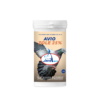
Electrolytes & Lactic Acid in Racing Birds
Role of Electrolytes in Managing Lactic Acid in Racing Birds
Racing pigeons push their bodies to the limits during training and competition. One of the most common challenges they face post-race is lactic acid buildup—an issue that can lead to muscle fatigue, slower recovery, and compromised performance. One essential but often overlooked tool in managing this is electrolyte supplementation.
In this blog post, we’ll explore why electrolytes matter, how they help control lactic acid buildup, and what pigeon fanciers should look for in an effective electrolyte formula like PHP Electro Boost.
Why Lactic Acid Is a Problem for Racing Pigeons
During intense physical exertion like long-distance races pigeons shift from aerobic to anaerobic metabolism, especially in the final stages of flight. Anaerobic respiration leads to the production of lactic acid, a byproduct that accumulates in muscles and causes:
-
Muscle stiffness and fatigue
-
Reduced flight efficiency
-
Slower recovery after races
-
Increased risk of injury and illness
Left unmanaged, lactic acid buildup can severely limit a pigeon’s performance potential.
Understanding Electrolytes and Their Role
Electrolytes are minerals in body fluids that carry an electric charge. In pigeons, the most important electrolytes include:
-
Sodium (Na⁺) – Maintains fluid balance
-
Potassium (K⁺) – Essential for nerve and muscle function
-
Calcium (Ca²⁺) – Supports muscle contraction and recovery
-
Magnesium (Mg²⁺) – Helps relax muscles and reduce cramping
-
Chloride (Cl⁻) – Balances fluid levels and pH
These minerals regulate hydration, nerve signaling, pH balance, and muscle contractions—making them vital for recovery post-race.
The Connection Between Electrolytes and Lactic Acid
When pigeons fly for long durations, their bodies lose electrolytes through sweat and respiration. If these losses aren’t replaced, the resulting electrolyte imbalance can:
-
Worsen muscle fatigue
-
Delay the breakdown of lactic acid
-
Prolong recovery time
-
Disrupt fluid and acid-base balance
By replenishing lost electrolytes, you support faster lactic acid clearance, muscle repair, and hydration—allowing the bird to return to peak form quickly.
Symptoms of Electrolyte Deficiency in Pigeons
Watch for these warning signs after races:
-
Lethargy and lack of energy
-
Dehydration (sunken eyes, dry droppings)
-
Muscle tremors or wing droop
-
Poor appetite or feed intake
-
Slow return from races
-
Uneven or erratic flight
These symptoms can easily be misinterpreted as general fatigue or illness, but often they point to electrolyte depletion and lactic acid overload.
Post-Race Recovery Protocol: Use of PHP Electro Boost
PHP Electro Boost is a performance-grade electrolyte supplement designed for racing pigeons. It contains the optimal balance of key electrolytes and fast-absorbing sugars for immediate energy and hydration.
Benefits of PHP Electro Boost:
-
Rapid rehydration after races
-
Replenishment of sodium, potassium, magnesium, and calcium
-
Reduced muscle stiffness and fatigue
-
Enhanced lactic acid clearance
-
Supports kidney function for toxin removal
-
Encourages feed and water intake post-flight
How to Use:
-
Dosage: Follow manufacturer’s guidelines, typically 1 teaspoon per liter of drinking water
-
Timing: Administer within 30–60 minutes post-race
-
Duration: Continue for 24–48 hours after intense exercise
-
Tip: Combine with a glucose product for additional energy
Additional Strategies to Combat Lactic Acid
While electrolytes play a central role, here are a few other effective strategies to minimize lactic acid buildup:
1. Proper Pre-Race Conditioning
Well-conditioned birds build muscle endurance and develop a more efficient aerobic metabolism, reducing reliance on anaerobic (lactic acid-producing) energy pathways.
2. Balanced Nutrition
Ensure a racing feed rich in complex carbs and moderate fat levels. Avoid overfeeding fatty seeds before races, as excess fat can slow digestion and worsen lactic acid buildup.
3. Hydration Before and After Flight
Hydration before the race is just as critical as post-race. Provide electrolyte-enriched water the day before and immediately after the race.
4. Loft Rest and Recovery Environment
Post-race, place birds in a calm, well-ventilated loft. Dim lighting and reduce handling to support recovery.
5. Regular Supplementation
Incorporate electrolytes weekly, even during training, not just post-race. This builds resilience and helps prevent major imbalances.
When to Supplement with Electrolytes
| Situation | Electrolyte Support Needed? |
|---|---|
| Long-distance race (150+ km) | Yes |
| Hot or humid weather conditions | Yes |
| Pre-race hydration (1 day before) | Yes |
| Winter/off-season training | Sometimes |
| Light loft exercise | Not necessary |
Common Mistakes to Avoid
Only using electrolytes during race season:
Pigeons benefit from consistent use, not just during peak events.
Over-dosing electrolytes:
Too much can cause osmotic diarrhea and worsen dehydration. Always follow dosage guidelines.
Mixing with medications or probiotics without checking compatibility:
Some substances can interact poorly. Administer separately if unsure.
Using human electrolyte products like Gatorade:
These are not formulated for avian physiology and can contain harmful additives.
Importance of Product Quality
Not all electrolyte supplements are created equal. Choose one that is:
-
Formulated for pigeons
-
Includes all essential minerals
-
Free from artificial colors and preservatives
-
Has been tested for safety and effectiveness
PHP Electro Boost is trusted by fanciers for delivering a clean, well-balanced formula specifically for avian performance and recovery.
Final Thoughts
Electrolyte supplementation is not just a post-race add-on—it’s a key component of a proactive racing pigeon health strategy. By understanding how electrolytes help manage lactic acid, you’ll help your birds recover faster, perform better, and stay healthier through every stage of the season.
Add PHP Electro Boost to your racing toolkit today, and give your birds the recovery edge they need to stay competitive.


